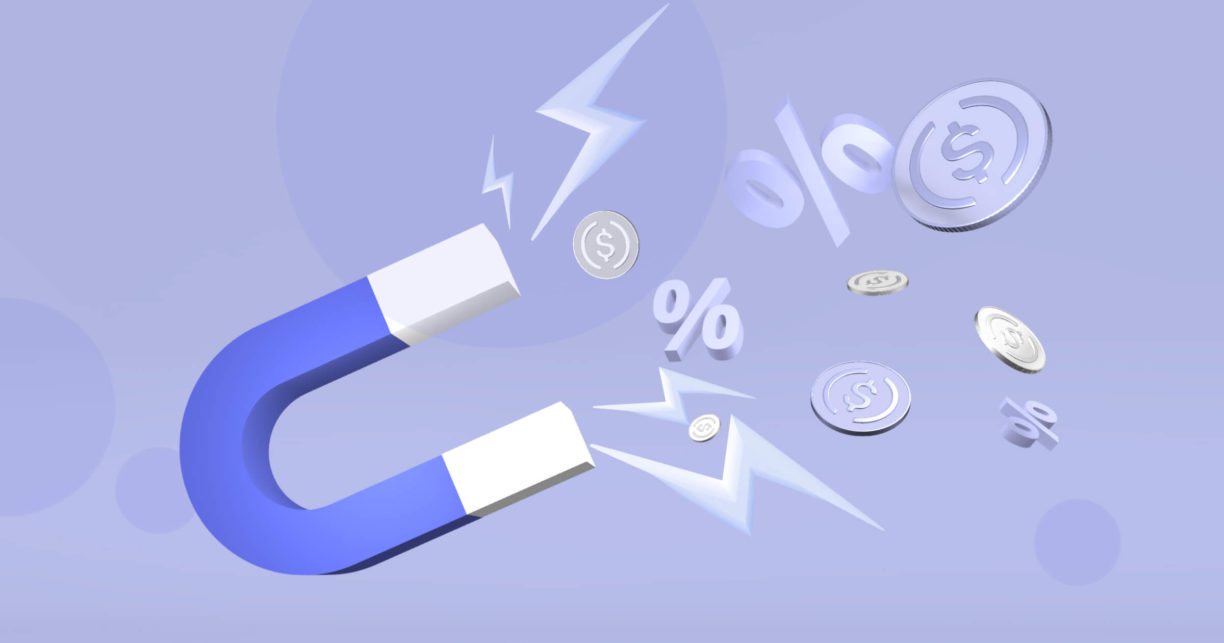Customer retention rate is one of the most difficult metrics to improve. However, it’s also one of the most important. There are so many aspects of calculating your retention rate, and it’s not as simple as adding up all your customers and dividing them by the number of customers you had last year. But don’t worry, we’ll make it easy to understand.
What is Customer Retention?
Customer retention is the process of retaining your customers by constantly fulfilling their buying intent.
Retaining customers is essential because it allows you to keep your business running, especially when you don’t want to bear the costs of scouting for new customers (which is 5x) to that of retaining your existing ones. Therefore, maintaining a balance is important for you to witness increase in revenues.
To retain customers, you need to ensure that they are satisfied with the product or service they purchased from you. If they’re not satisfied, they may look elsewhere for similar products or services, which means they won’t be coming back to buy from you in the future.
The best way to retain customers is through exemplary customer service and promptly providing them with what they want.
Customer retention can be achieved in many ways, but all methods aim to keep your current customers happy with your brand and prevent them from switching to a competitor. The following are some examples of ways to retain customers:
- Offering discounts to loyal customers
- Upselling products/services
- Sending holiday cards or other personalized greetings from management
- Providing excellent customer service
Customer retention has become more and more important as businesses have moved away from traditional advertising models that focus on getting new customers and towards digital marketing, which relies much more heavily on retaining existing ones. This is because digital marketing is usually cheaper than traditional advertising, but if you don’t have a solid customer base already established, then you can’t sustainably run a successful campaign.
What is Customer Retention Rate?
Customer retention rate is the percentage of customers who continue to use a product or service after the initial purchase, divided by the number of customers who purchased during a given period.
There are many ways to calculate this metric. One of the most common methods is to divide the number of customers who purchased during a given period by the total number of customers at the beginning of that period.
It is essential to note that some businesses have different definitions for customer retention rates. If you’re working with an industry that uses another purpose, make sure you know what it is before attempting to calculate your retention rate.
It’s an essential metric in business because it shows how likely a customer is to come back after they’ve already been your customer once. It’s often used as a predictor of how many additional sales you can expect from each customer. So, if your retention rate is low, you might need to focus on improving that number before you can expect growth in your sales numbers.
How to Calculate Your eCommerce Customer Retention
There are many ways to calculate your eCommerce customer retention rate. But understanding how to do it is the first step to understanding how to improve it.
Here’s how to calculate your eCommerce customer retention rate:
- Determine the number of customers who purchased during a specific period (e.g., three months).
- Divide the number of customers from step 1 by the total number of customers at the beginning (e.g., three months ago).
- Multiply that result by 100%. This gives you your first approximation for your eCommerce customer retention rate.
Calculating your eCommerce retention rate is a great way to see how well your sales and marketing strategies work. Your retention rate tells you how many of the customers who purchased you once will do it again at some point in the future.
If you have a high retention rate, people are happy with what they bought and want to buy from you again. If your retention rate is low, it could mean something wrong with your product or service—or maybe it’s just not available in their area!
Customer Retention Rate Formula
If you’re looking to grow your eCommerce business, the customer retention rate is an important metric to track.
It’s a key indicator of how well your company keeps customers happy and engaged. You can calculate your customer retention with this formula:
(Total number of customers at the beginning of the period / Total number of customers at the end of the period) * 100
You’ll get a percentage that shows how many customers are still shopping with you after a certain period.
To calculate it, follow these steps:
- Start by finding out how many customers you had at the beginning and end of a certain period—say, 30 days or 60 days. If you don’t have this information readily available, ask someone in marketing or sales, which should be able to find it for you. If there are no numbers available for either side yet—use estimates!
- Divide the number of customers who left by those who stayed (the total number of customers at the beginning minus those who left). That gives you an idea about how many people have been lost since last time. Then multiply that by 100%.
It’s important to note that there are different ways of calculating the customer retention rate, depending on what you’re trying to measure. For example, suppose you’re looking at how many people return after their first visit (or even after their first purchase). You can use the number of “return visits” divided by the total number of visitors as a percentage.
But let’s take a look at an example calculation using our hypothetical coffee shop:
Imagine that we have 100 visitors who visit our site, 10% of whom make a purchase (10 orders). Of those ten orders, five people come back for another purchase within 30 days. That means that 5 out of 100 visitors returned within 30 days (5%). If we wanted to calculate this as a percentage, we would divide five by 100 and get 0.05 or 5%.
Why is It Important to Measure It?
Calculating your eCommerce customer retention is essential in understanding how you can improve your business. By measuring your rates, you’ll be able to identify areas for improvement and make changes that will help you retain more customers.
Retention rates vary widely depending on factors, including the industry in which you work and the type of product or service your business offers. For example, retail stores typically have higher retention rates than restaurants because they have more repeat visitors than casual diners.
If you have a low retention rate, most people who come to your site don’t return to buy anything else. It’s essential to remember that not all customers are created equal: some will come to your site once or twice and never buy anything, while others may become repeat customers.
A high customer retention rate means that people are coming back to make purchases repeatedly. A reasonable ecommerce rate varies between 20% and 30%, as per industry benchmarks. If you’re seeing a lower percentage than that, there may be something going on with your content or pricing strategy that needs attention.
Three Ways to Improve Your Retention Scores
Improving your customer retention is one of the best ways to grow your business. The reality is that customers have more choices than ever before, so if they’re not happy with you, they can easily take their business elsewhere. Here are a few ways to improve yours:
1. Top-Notch Customer Service
The first thing you should do is make sure that your customer service is top-notch. A business’s reputation for treating customers well can significantly impact its ability to retain its customers. If a customer has a positive experience with your company and feels like they were treated well, they’ll be more likely to stick around.
2. Relevancy
The second way to improve customer retention rates is by making sure that your product or service line stays fresh and relevant. If your business is selling something new, you want to make sure it stays new, or else you risk losing those customers who want something new every time they shop with you.
3. Reward Customers for Their Loyalty
The third way to improve customer retention rates is by finding ways to reward loyal customers. This could mean offering discounts or free shipping after spending specific amounts of money with your company over time (or any number of other methods).
Several things can improve your customer retention, such as making sure that your website is easily navigable and organized so that a customer can find what they’re looking for quickly and easily. Also, have a straightforward contact form on your website, and providing an email address so that customers can reach out to you via email if they prefer.
Conclusion
Learning how to calculate your customer retention rate, and improving on it over time, is an essential aspect of managing your company’s finances. It is vital to help you build and maintain a healthy profit margin. Still, it will also assist you in building lasting relationships with happy customers who have a vested interest in buying from you again and again.
FAQs
What are other good customer retention metrics?
Another good customer retention metric is churn. Churn is the percentage of customers who cancel their subscriptions. It can be calculated by dividing the number of cancellations by the total number of subscribers and multiplying that result by 100.
Another metric is the Net Promoter Score (NPS), which measures how likely existing customers recommend your business to others. NPS can be calculated by asking customers a question like this: “On a scale from 0 to 10, how likely are you to recommend [company name] to a friend or colleague?” Then you can use the answers as follows:
- Promoters = 9 or 10
- Passives = 7 or 8
- Detractors = 0 through 6
What is a good retention rate?
A good retention rate is a rate that is high enough to keep your users engaged, but not so high that it costs too much money.
It’s important to note that retention rates are often measured over time rather than an absolute number. For example, if you have a user retention rate of 50%, it means that half of your users return after one month. You may also see it as a percentage: “50% of users come back after one month.”
How are retention and churn rates related?
Retention rate and churn rate are two measures of customer retention. They are related because they represent how many customers remain active in your product or service over time.
The retention rate is the percentage of customers who stay with your company over a given period, usually one year. To calculate it, you divide the number of customers who remained active by the total number of customers. For example, if you had 100 customers at the beginning of a year and 80 remained active at the end of the year, your retention rate would be 80%.
The churn rate is similar but focuses on only those customers who left—that is, it only considers customers who have been inactive for some time and no longer use your product or service at all. It is calculated by dividing the number of lost customers by the total number of customers at the beginning of a given period. For example, if you had 100 paying customers at the beginning of a year, but ten stopped using your product by the end of that year, your churn rate would be 10%.



